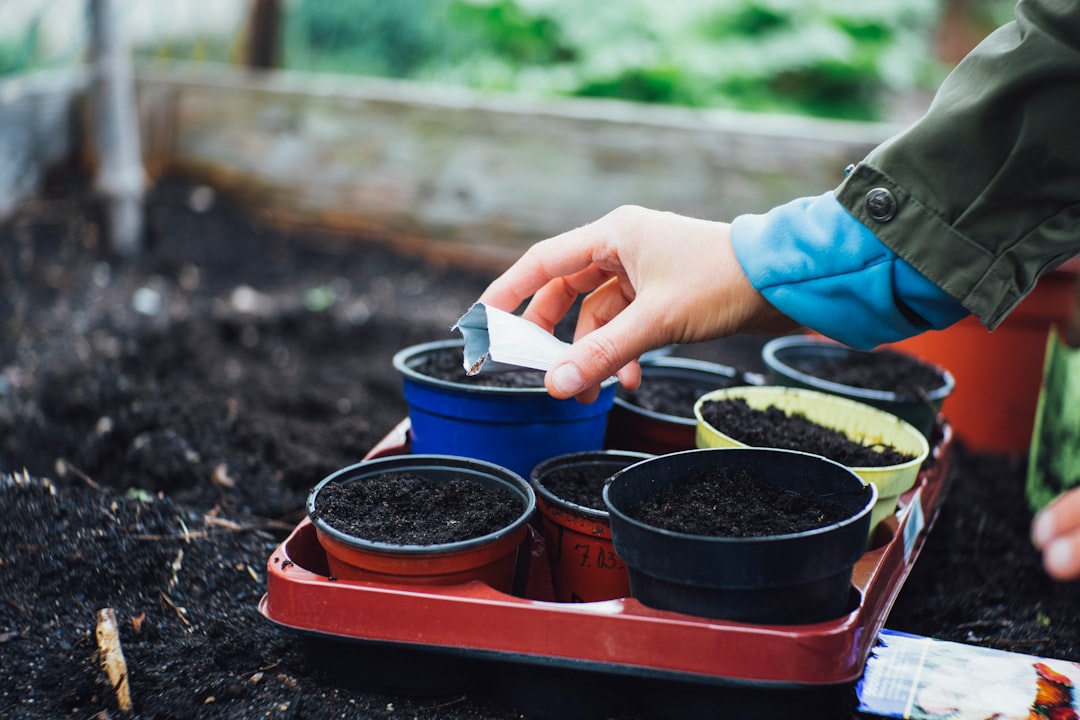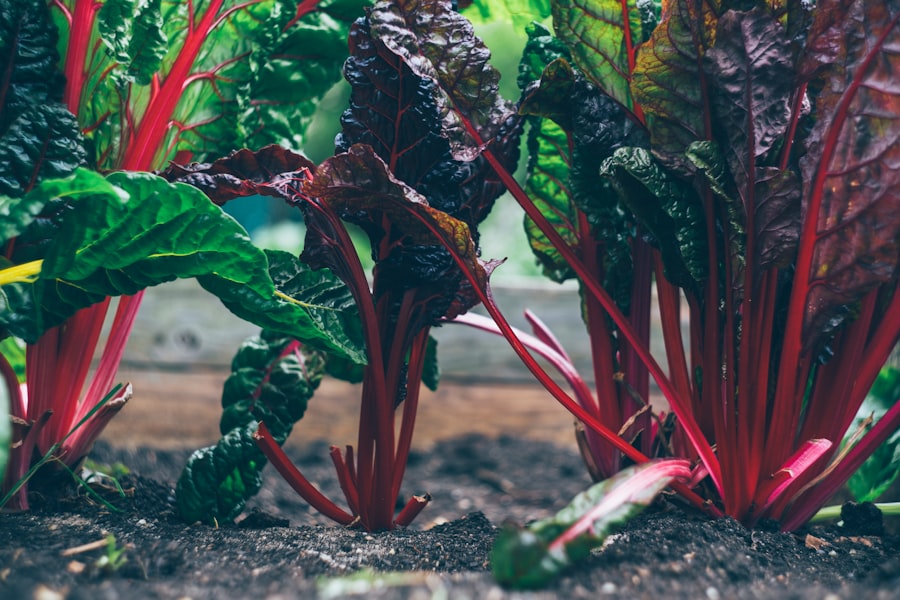Companion Plants for Thriving Yellow Squash

Companion planting is a gardening technique that involves planting different species of plants together to benefit each other. This practice has been used for centuries and is based on the idea that certain plants have natural affinities for each other and can help each other grow and thrive. When it comes to yellow squash, companion planting can be particularly beneficial. Not only can it improve the health and yield of your squash plants, but it can also help control pests and diseases, enhance flavor, and attract beneficial insects.
Understanding the Benefits of Companion Planting for Squash
One of the main benefits of companion planting for yellow squash is improved soil quality. Certain companion plants, such as clover, alfalfa, and comfrey, have deep root systems that help break up compacted soil and improve drainage. They also add organic matter to the soil as they decompose, which enriches it with nutrients and improves its structure.
Companion planting can also help control pests and diseases that commonly affect yellow squash. For example, planting nasturtiums near your squash plants can deter aphids, squash bugs, and cucumber beetles. Garlic is another effective companion plant that repels pests such as aphids, spider mites, and squash bugs. Catnip is known to repel flea beetles, which can damage squash leaves.
In addition to pest control, companion planting can enhance the flavor of yellow squash. Certain herbs like basil, dill, and oregano have aromatic compounds that can improve the taste of squash when planted nearby. These herbs also attract pollinators, which can increase fruit set and yield.
Furthermore, companion planting can attract beneficial insects that prey on pests. For example, planting sunflowers near your yellow squash can attract ladybugs and lacewings, which feed on aphids and other soft-bodied insects. Yarrow is another beneficial plant that attracts predatory wasps, which help control caterpillars and other pests. Fennel is known to attract beneficial insects such as hoverflies and parasitic wasps, which can help control aphids and other pests.
Choosing the Right Companion Plants for Yellow Squash
When choosing companion plants for yellow squash, it’s important to select plants that complement each other and provide mutual benefits. Some plants that complement yellow squash include beans, marigolds, and radishes.
Beans are a great companion plant for yellow squash because they fix nitrogen in the soil, which can benefit the squash plants. They also have a different growth habit than squash, so they won’t compete for space or resources. Marigolds are another good companion plant because they repel pests such as nematodes and beetles. Radishes can be planted as a trap crop to attract pests away from the squash plants.
Plants that repel pests and diseases are also beneficial companions for yellow squash. In addition to nasturtiums, garlic, and catnip mentioned earlier, other plants that repel pests include chives, onions, and tansy. These plants have strong odors or contain compounds that deter pests from feeding on the squash plants.
Plants that attract beneficial insects are also important companions for yellow squash. In addition to sunflowers, yarrow, and fennel mentioned earlier, other beneficial plants include daisies, dill, and parsley. These plants have small flowers that attract a wide range of beneficial insects, including bees, butterflies, and predatory wasps.
How to Plant Companion Plants for Yellow Squash
| Companion Plant | Benefits |
|---|---|
| Marigolds | Repel harmful insects and nematodes |
| Nasturtiums | Attract beneficial insects and deter squash bugs |
| Borage | Attract pollinators and repel tomato hornworms |
| Radishes | Repel cucumber beetles and squash bugs |
| Beans | Fix nitrogen in the soil and provide shade for squash roots |
Proper spacing and placement are important when planting companion plants for yellow squash. It’s best to give each plant enough space to grow and spread without overcrowding each other. This will ensure that each plant receives adequate sunlight, air circulation, and nutrients.
Timing of planting is also crucial. Companion plants should be planted at the same time as the yellow squash or slightly before. This will allow them to establish and grow alongside the squash plants, providing the desired benefits throughout the growing season.
Soil preparation is another important step in companion planting for yellow squash. The soil should be well-drained and rich in organic matter. Adding compost or well-rotted manure to the soil before planting can help improve its fertility and structure. It’s also a good idea to test the soil pH and make any necessary adjustments to ensure optimal growing conditions for both the squash and companion plants.
Examples of Successful Companion Planting for Yellow Squash
There are several examples of successful companion planting combinations for yellow squash. One popular combination is squash and beans. The beans fix nitrogen in the soil, which benefits the squash plants, while the squash provides shade and support for the climbing beans.
Another successful combination is squash and marigolds. Marigolds repel pests such as nematodes and beetles, which can damage squash plants. They also add a splash of color to the garden and attract beneficial insects.
Squash and radishes are another good combination. Radishes can be planted as a trap crop to attract pests away from the squash plants. They also help break up compacted soil with their taproots, improving drainage and soil structure.
Companion Plants that Help Control Pests and Diseases for Yellow Squash

In addition to nasturtiums, garlic, and catnip mentioned earlier, there are other companion plants that can help control pests and diseases for yellow squash.
Nasturtiums are not only beautiful flowers but also effective pest deterrents. They repel aphids, cucumber beetles, and squash bugs with their strong scent. Planting them near yellow squash can help protect the plants from these common pests.
Garlic is another powerful companion plant that repels a wide range of pests. Its strong odor deters aphids, spider mites, and squash bugs. Planting garlic near yellow squash can help keep these pests at bay and protect the plants from damage.
Catnip is a member of the mint family and is known for its ability to repel flea beetles. These small insects can damage squash leaves, but planting catnip nearby can help deter them and protect the plants.
Companion Plants that Enhance the Flavor of Yellow Squash
Certain herbs can enhance the flavor of yellow squash when planted nearby. Basil, dill, and oregano are three examples of companion plants that can improve the taste of squash.
Basil has a sweet and aromatic flavor that pairs well with the mild taste of yellow squash. Planting basil near yellow squash can infuse the squash with its distinctive flavor and aroma.
Dill has a unique flavor that complements the taste of yellow squash. Its feathery leaves and delicate flowers add visual interest to the garden as well. Planting dill near yellow squash can enhance its flavor and make it even more enjoyable to eat.
Oregano is another herb that can enhance the flavor of yellow squash. Its pungent and slightly bitter taste adds depth to the flavor profile of squash. Planting oregano near yellow squash can impart its distinctive flavor and make the squash more flavorful.
Companion Plants that Improve Soil Quality for Yellow Squash
Companion plants that improve soil quality are important for the health and growth of yellow squash. Clover, alfalfa, and comfrey are three examples of companion plants that can enrich the soil and improve its structure.
Clover is a nitrogen-fixing plant that adds nitrogen to the soil as it grows. This essential nutrient is important for plant growth and development. Planting clover near yellow squash can help ensure that they have an adequate supply of nitrogen for optimal growth.
Alfalfa is another nitrogen-fixing plant that can improve soil fertility. Its deep root system helps break up compacted soil and improve drainage. Planting alfalfa near yellow squash can help improve the soil structure and create a more favorable growing environment.
Comfrey is a dynamic accumulator, which means it absorbs nutrients from deep in the soil and stores them in its leaves. When the leaves decompose, they release these nutrients back into the soil, enriching it with organic matter. Planting comfrey near yellow squash can help improve the soil fertility and provide a steady supply of nutrients.
Companion Plants that Attract Beneficial Insects for Yellow Squash
Companion plants that attract beneficial insects are important for pest control in yellow squash. Sunflowers, yarrow, and fennel are three examples of companion plants that can attract beneficial insects to the garden.
Sunflowers have large, showy flowers that attract a wide range of beneficial insects, including ladybugs and lacewings. These insects feed on aphids and other soft-bodied pests that can damage yellow squash plants. Planting sunflowers near yellow squash can help attract these beneficial insects and keep pest populations in check.
Yarrow is another beneficial plant that attracts predatory wasps. These wasps feed on caterpillars and other pests that can damage yellow squash plants. Planting yarrow near yellow squash can help attract these beneficial insects and provide natural pest control.
Fennel is known for its feathery foliage and aromatic seeds, but it also attracts beneficial insects such as hoverflies and parasitic wasps. These insects prey on aphids and other pests that can infest yellow squash plants. Planting fennel near yellow squash can help attract these beneficial insects and provide natural pest control.
Tips for Maintaining a Successful Companion Planting for Yellow Squash
To maintain a successful companion planting for yellow squash, there are several tips to keep in mind.
Regular watering and fertilization are important for the health and growth of yellow squash and companion plants. Water the plants deeply and consistently to ensure that they receive enough moisture. Fertilize them regularly with a balanced organic fertilizer to provide them with the nutrients they need to thrive.
Proper pruning and maintenance are also important. Remove any dead or diseased plant material to prevent the spread of pests and diseases. Prune back any overgrown or crowded plants to improve air circulation and reduce the risk of fungal infections.
Monitoring for pests and diseases is crucial for early detection and control. Inspect the plants regularly for signs of damage or infestation. If pests or diseases are detected, take appropriate measures to control them, such as handpicking pests or applying organic pest control methods.
Companion planting is a great way to improve the health and yield of your yellow squash plants. By choosing the right companion plants and following proper planting and maintenance techniques, you can enjoy a bountiful harvest of delicious and healthy squash. Whether it’s improving soil quality, controlling pests and diseases, enhancing flavor, or attracting beneficial insects, companion planting offers numerous benefits for yellow squash. So why not give it a try in your garden? You may be pleasantly surprised by the results.



